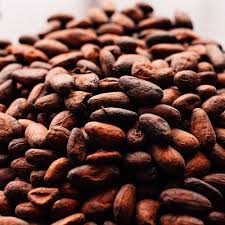
Cocoa is a fatty bean obtained from Theobroma cocoa, It is dried and fermented after which processed further to extract cocoa powder, cocoa oil, cocoa butter, cocoa liquor and liqueur, and other solids.
The three (3) common plants from which cocoa is derived are criollo, trinitario, and forastero. Of these, forastero has emerged as the most sought-after type of cocoa plants as it is known to produce the best quality of cocoa.
The major cocoa producing nations include Cote d'Ivoire, Ghana, Nigeria, Ecuador, and Cameroon.
Cote d'Ivoire and Ghana currently represent the world's two biggest producers of cocoa. The two countries together currently account for nearly sixty percent (60%) of the total global cocoa production.
Other major cocoa producers include Indonesia, Nigeria, Ecuador, Brazil and Cameroon. Region-wise, Africa currently accounts for more than seventy percent (70%) of the total global cocoa production.
Despite being the largest producer, the region in Africa accounts for less than twenty-one percent (21%) of the total global cocoa processing market.
Though unsuitable for cocoa cultivation, Europe currently represents the world's biggest importer and processer of cocoa.
The competitive landscape of the global cocoa processing industry is currently quite concentrated in nature with the top three (3) players currently accounting for about forty percent (40%) majority of the total global market.
The cocoa bean is the key raw material for producing chocolates. The growing consumption of chocolates is boosting the demand for cocoa in the global market.
Chocolate is perceived to be a premium luxury since ancient times, due to its sweet taste and aroma. It also offers various health benefits such as reduction of cholesterol levels and reducing the risk of cardiovascular problems.
Chocolate is a rich source of antioxidants and minerals. It also helps in maintaining body weight. These factors are boosting the demand for chocolate globally and ultimately fueling the growth of the global cocoa market.
Cocoa butter and cocoa powder are produced from cocoa liquor. The cocoa powder and cocoa butter are now increasingly used in various industries such as pharmaceuticals, bakery, food & beverages, nutraceuticals, and cosmetics as flavoring and coloring agent.
It is also used to make toiletries due to its flavor and aroma. Therefore, the growing application of cocoa in different industries is expected to boost the global cocoa market in the forthcoming years.
The global cocoa market size was valued at $12,874.0 million in 2019, and is estimated to reach $15,501.1 million by 2027, registering a compound annual growth rate (CAGR) of four point three percent (4.3%) from 2021 to 2027.
The rise in awareness of health benefits regarding the consumption of cocoa-rich products drives the growth of the cocoa products market. The health benefits to the human body include decreased hypertension, reduced chronic fatigue syndrome, protection against sunburn, and others.
Cocoa is also rich in polyphenols that help in protecting the body's tissues against oxidative stress and associated pathologies such as cancers, and inflammation. These factors also drive the growth of the cocoa products market.
Increase in demand for chocolate and its related products such as milk chocolate, sweet chocolate, and dark chocolate, along with aggressive advertisements by manufacturers for brand recognition majorly drive the growth of the cocoa products market.
However, volatile prices and limited production of the cocoa hinders the growth of this market.
On the contrary, improvements in commercial farming techniques are used to manufacture cocoa, which is expected to increase the supply of this product thereby, improving chances for growth in the coming future
The cocoa market is segmented as below:
By Product Type
- Cocoa Beans
- Cocoa Butter
- Cocoa Powder & Cake
- Cocoa Paste & Liquor
- Chocolate
By Application
- Cosmetics
- Pharmaceuticals
- Food and beverages
- Confectionery
In Nigeria, about eighty percent (80%) of cocoa produced is exported as cocoa beans while the other twenty percent (20%) is processed into powder, butter, cake and liquor before being exported.
Nigeria is yet to fully capitalize on cocoa production, as most of the beans are sold unprocessed. There are eight cocoa processing factories in Nigeria with a combined installed capacity of one hundred and fifty thousand (150,000) metric tons.
There are about seventeen (17) cocoa processing companies in Nigeria. Of the seventeen (17), only nine (9) are functional and out of the nine, only two (2) are owned by foreigners.
South West Nigeria is regarded as the cocoa belt of the country, accounting for about seventy percent (70%) of Nigeria's output.
It is produced in fourteen (14) states of the federation namely Ondo, Cross River, Oyo, Osun, Ekiti, Ogun, Edo, Kogi, Akwa Ibom, Delta, Abia, Kwara, Ebonyi and Rivers state.
World consumption is estimated at two million, eight hundred thousand (2,800,000) tons per year. The largest cocoa importers are Europe (more than 1.2 million tons per year) and the United States (0.4 million tons per year). The largest importers are Holland, the US, Germany, Britain and Brazil.
Intending exporters would need to register a company in Nigeria and get an export licence from Nigerian Export Promotion Council (NEPC).
To obtain an export license, you need to register a limited liability company with the corporate affairs commission (CAC).
Then the following documents will be submitted to the Nigerian export promotion council (NEPC).
1. A duly completed export license application form obtained from the Nigerian export promotion council (NEPC).
2. Copy of certificate of incorporation
3. Memorandum and articles of association
4. Certified true copy of Form corporate affairs commission (CAC) 7 and corporate affairs commission (CAC) 2
Pre-Export Documentations in Nigeria
The following documents are required by central bank of Nigeria (CBN) to be submitted to the bank before any legal export can take place. These include;
1. Completed original Nigeria Export Proceed (NXP) form
2. Valid Nigeria Export Promotion Council (NEPC) license (copy)
3. Valid Proforma Invoice (copy)
4. Completed original copy Cobalt RFI form
5. Certificate of incorporation (copy)
Post-Export Documentations (Exchange Control Documents)
Upon shipment of the goods, the following documents (called exchange control documents) are required by central bank of Nigeria (CBN) to be submitted to the bank;
1. Nigeria Export Proceed (NXP) form duly endorsed and stamped by the Nigeria Custom’s Service, evidencing shipment of goods.
2. Receipt of payment for Nigeria Export Supervision Scheme (NESS) fees i.e naira equivalent of zero point five percent (0.5%) of the free on board (FOB) value of the shipment
3. Single good declaration (SGD) form issued by Customs
4. Clean Certificate of Inspection (CCI) issued by Cobalt
Other documents
1. Bill of lading
2. Invoice
3. Packing list
In order to stimulate and encourage non-oil export in Nigeria, the Federal Government has put in place a regime of incentives to stimulate and attract private investment.
These incentives among others include:
1. Manufacture – In- Bond Scheme
The Manufacture-in-Bond Scheme is designed to encourage manufacturers to import duty free raw material inputs and other intermediate products whether prohibited or not for the production of exportable goods, backed by a bond issued by any recognized commercial bank, merchant bank, insurance company or NEXIM.
The Bond will be discharged after evidence of exportation and repatriation of foreign exchange has been produced.
2. Duty Drawback Scheme
The Duty Drawback Scheme provides for refund of duties/surcharges on raw materials including packing and packaging material used in the manufacture of products upon effective exportation of the final product.
3. Export Expansion Grant Scheme
The Export Expansion Grant Scheme provides for cash inducement for exporters who have exported a minimum of five hundred thousand Naira (₦ 500,000) worth of processed products. Exporters of processed products initially received a four percent (4%) rebate on repatriated proceeds, which, as of 2002, has been increased to twenty percent (20%).
This scheme was discussed most often by the exporters interviewed for this report. Due to the six to eight (6-8) months’ delay in payment, there is a secondary market for the Duty Credit Certificates.
The Certificates are essentially cash, to be collected eventually from the Government. Usually the exporter sells this certificate to importers through the banks at ten percent (10%).
4. Export Development Fund Scheme
The Export Development Fund (EDF) is a scheme developed by the Federal Government of Nigeria to provide financial assistance to private sector exporting companies to cover part of their initial expenses in respect of the following export promotion activities:
• Participation in training courses, symposia, and seminars in all aspects of export promotion
• Advertising and publicity campaigns abroad
• Export market research
• Product design and consultancy
• Participation in trade fairs, missions
• Cost of collecting trade information and
• Supporting the development of export oriented industries
Also the Nigerian Export Promotion Council (NEPC) meets regularly with exporters to discuss, develop and improve new incentives.
While preparing for export, the following should be considered before deciding on the type of products and volume to be exported;
Terms of Trade
Product – Quality and Quantity, Pricing and Packing
Procedure
Payment terms
Delivery Terms
Warehousing
Export/Forwarding Agent
Terms of Trade:
The terms trade refers to the body of the contract agreed between the buyer and seller. Under such terms issues like that Product vis-à-vis the Quality /Quantity, which affects the price is clearly stated.
Procedure to taken at every stage, Packaging, payment and delivery would be documented and agreed by both parties. Contract is usually signed based on this terms and exchanged by E-mail, Fax or post by both parties.
Product – Quality and Quantity, Pricing and Packing:
The product is at the centre of the contract because that is what the buyer wants and they need it in certain Quality /Quantity which ultimately affects the price.
For the purpose of this write-up, the international standard specification of cocoa is given below
BEAN COUNT: 100-115 beans per 100g
MOULD: 5% MAX
INSECTT DAMAGED: 0.49% MAX
SLATY: 5% MAX
MECHANICALLY DAMAGED: 0.75% MAX
TOTAL DEFECTIVE RATIO: 6.25 % MAX
MAX.MOISTURE: 7.5% Max
Product specification is usually confirmed by assay (testing) companies like Eye view Inspection, Cobalt and SGS.
I would advise you use Eye view Inspection. There contact details is given below
12-14 Babs Animashaun, Surulere, Lagos.
+234(0) 805 905 2590
+234(0) 703 421 5050
info@eyeviewinspection.com
www. eyeviewinspection.com
Packaging is usually in fifty (50) kilogramme used polyprpylene (PP) bags.
Procedure:
The procedure refers to the step by step guide used in executing the contract. It shows at each particular stage what is required from both parties. An example is given below.
Seller signs contract
Buyer signs contract
Seller places two percent (2%) performance bond
Buyer open letter of credit
Delivery of the commodity starts
Procedure differs and it is usually based on the buyer and seller finding a common ground to do business. Some sellers would want a Letter of Intent (LOI) or Irrevocable Corporate Purchase Order (ICPO) from the buyer and also the buyer might demand a Full Cooperate Offer (FCO) from the seller.
Payment terms:
This is the mode and instrument to be used in paying the seller. The most common type is letter of credit (L/C). It is usually issued by the buyer's bank to the seller’s bank and it is based on some conditions.
Payment is usually based upon the presentation of some documents which confirms the Quality, Quantity, Price, Packaging and some other conditions. Documents to be presented before payments are usually stated in the contract signed with the buyer.
A letter of credit (L/C) could be operative or non –operative. An operative letter of credit (L/C)as the name suggests is one in which the letter of credit (L/C) is active, that is, the seller would be paid upon the presentation of the needed documents while a non- operative is one in which the letter of credit (L/C) is not active.
It is usually used to show the commitment of the buyer to open an operative letter of credit (L/C) after the seller places his two percent (2%) performance bond (PB) is usually demanded by the buyer from the seller to confirm the sellers readiness and willingness to execute the contract. The performance bond (PB) is two percent (2%) of the total cost of contract.
In case the seller fails to perform after placing the two percent (2%) performance bond (PB), the seller would lose the money but when the seller executes the contract, the two percent (2%) performance bond (PB) would be returned.
A letter of credit (L/C) could also be transferable or non – transferable. End- Seller usually demands non – transferable letter of credit (L/C) since they are the end beneficiary of the fund but in the case of agents/mandate, they usually like the letter of credit (L/C) to be transferable, so as to prevent being circumvented.
The transferability of a letter of credit (L/C) simply means a letter of credit (L/C) been transferable from one seller to another. In the same vein, an L/C could also be divisible or non- divisible. The divisibility simply means the proceeds of a letter of credit (L/C) can be divided amongst different beneficiaries.
End – Sellers usually want Non- divisible letter of credit (L/C).
Buyer and seller would have to agree on the percentage of the L/C to be paid to the seller upon presentation of the documents and this is usually stated in the contract. It could be ninety percent (90%), ninety-five percent (95%), ninety-eight percent (98%) and the balance would be made after the confirmation of the specification at the destination port.
It is advisable to negotiate for at least ninety percent (90%) of first payment in other to cover your operation cost..
In case the seller do not agree to the result of the assay done by the inspecting agent, both parties can appoint an independent inspecting agency to re-conduct the assay and this should be stated in the contract.
Payment can also be by cash on delivery (COD). This is a situation whereby after shipping the goods and the original documents is couriered to the buyer for the clearance of the goods at the destination port.
The buyer would clear the goods and conduct an assay on the product to determine the quality and quantity. It is based on the report of this assay that the seller/ export is paid.
This form of payment gives no guarantee of payment and should be avoided
Delivery Terms:
The delivery terms can either be CIF, CNF, FOB or Ex Warehouse. The Exporter should only agree to do the terms that he can fund
CIF- Cost, freight and Insurance
CNF- Cost and Freight
FOB- Free o Board
Ex- Warehouse -Delivery to the warehouse of the buyer .It is usually within Nigeria.
FOB – Free On Board (named loading port): The classic maritime trade term, seller must load the goods on board the ship nominated by the buyer, cost and risk being divided at ship's rail. The seller must clear the goods for export.
CFR – Cost and Freight (named destination port): seller must pay the costs and freight to bring the goods to the port of destination. However, risk is transferred to the buyer once the goods have crossed the ship's rail
CIF – Cost, Insurance and Freight (named destination port): exactly the same as CFR except that the seller must in addition procure and pay for insurance for the buyer.
It is advisable that the seller do CNF, FOB or Ex-warehouse because it is less cumbersome.
Warehousing:
Because of the seasonality cocoa production, it is advisable that the seller makes provision for storage of the product in order to guarantee continuation.The warehouse facility could also be used for the assaying.
Export/Forwarding Agent:
Exporter/Seller must have an export agent, that is, forwarding agent and develop a close relationship with him so that he can help in arranging with the shipping company, the shipment date, freight cost per container and other needed documents for the smooth shipment.
To succeed in this business, exporter/seller should first of all secure the supply side of the transaction, that is, he /she ought to have a ready and steady source of the supply for the product after which he should approach the buyer for contract negotiation and signing.
The return on investment on the export of dry cocoa beans is estimated between ten to twenty percent (10%- 20%) per transaction and lead time of between one to two (1-2) months.
Do you want to know more about dry cocoa beans export from Nigeria and access over fifty (50) member only local commodity trading, export and import reports?
With a token of five thousand naira (₦ 5,000), you can subscribe to our paid services. Click on the PAID MEMBER SECTION to register and access the contents.
At Foraminifera Market Research (www.foramfera.com), we provide bespoke and up to date market research reports for beginners and exporters already in the commodity export market.
Our reports are designed to assist start-ups to understand the legal and financial requirements of starting the business, the market trends vis-a-vis demand and supply, competition, risk identification and mitigation strategies.
We also organize training, seminar and workshop on the subject matter.
Please feel free to use any of the methods below to get in touch with us.
p. +234(0) 8033782777 (call and whatsapp)
E-Mail: foraminiferamarketresearch@yahoo.com
Contact Person: Mr. Anaekwe Everistus Nnamdi Ikechukwu
Anaekwe Everistus Nnamdi Ikechukwu is a business development consultant with Foraminifera Market Research.























